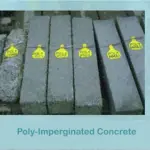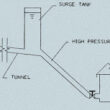Methods of Reducing Soil Liquefaction
It is extremely difficult and impractical to prevent liquefaction of soil in the field when the susceptible zone extends to a large depth. It is generally best not to construct buildings and other structures at sites prone to liquefaction. Because the remediation of the liquefaction hazard is quite expensive, it would be cost effective only at the sites where the land cost is extremely high.
Remediation is sometimes necessary at sites that have been developed and the buildings already exist and later it has been found that the soil is prone to liquefaction. This generally happens when adequate site investigation were not prior to the construction of buildings.
The following measures can be adopted to prevent liquefaction or to limit the damages caused by liquefaction.
The structures should be supported on deep foundations, such as piles, that extend through the liquefiable soil to deeper strong and stable strata. Since such piles will not be able to resist lateral loads in the liquefiable soil, other measures should be adopted to resist lateral loads.
The liquefaction of a soil can be prevented by compacting the soil and increasing its relative density. Compaction is usually done by means of vibratory rollers, compaction piles, vibroflotation, blasting, etc.
The extent to which the compaction should be done is ascertained by estimating the required SPT No. to prevent liquefaction for that soil for the design earthquake.
If the depth of the liquefiable soil is limited, it can be excavated and replaced with a well compacted soil. However, if the depth of the liquefiable soil is large, it becomes impractical to replace the soil because it requires extensive dewatering systems.
This method is however sometimes adopted at the sites of critical projects such as earth dams.
In this method, the soil is stabilized by injecting chemicals or cement grout into the soil. This method is sometimes used at sites where buildings already exist and other methods cannot be used.
As already discussed, the effective stress at a point increases as the water table is lowered. By restoring to extensive ground water pumping, the liquefaction can be prevented to some extent. However, this method is cost effective only when the water that is pumped can be used for municipal and industrial purposes.
The liquefaction hazard can be reduced to some extent by providing coarse sand blankets and drains in the soil deposit. The dynamic pore water pressure is thus easily dissipated and the effective stress is increased.
In this method, a number of holes are bored in the soil deposit and later filled with gravel and stones. Thus stone columns are formed. The stone columns have high permeability and are quite effective for rapid drainage of pore water. Thus the effective stress is increased.
As already discussed, when a surcharge load is applied to a soil deposit, the effective stress is increased. Thus the possibility of liquefaction is reduced. Monitoring of the pore water pressure will be required to assess the magnitude of the surcharge load and its duration.


















